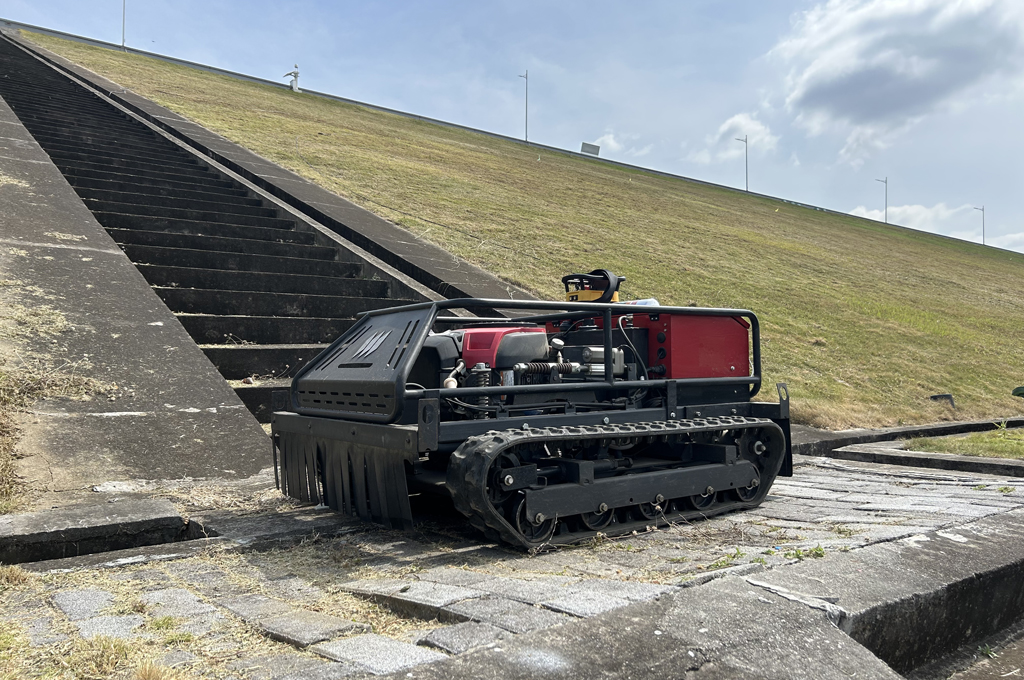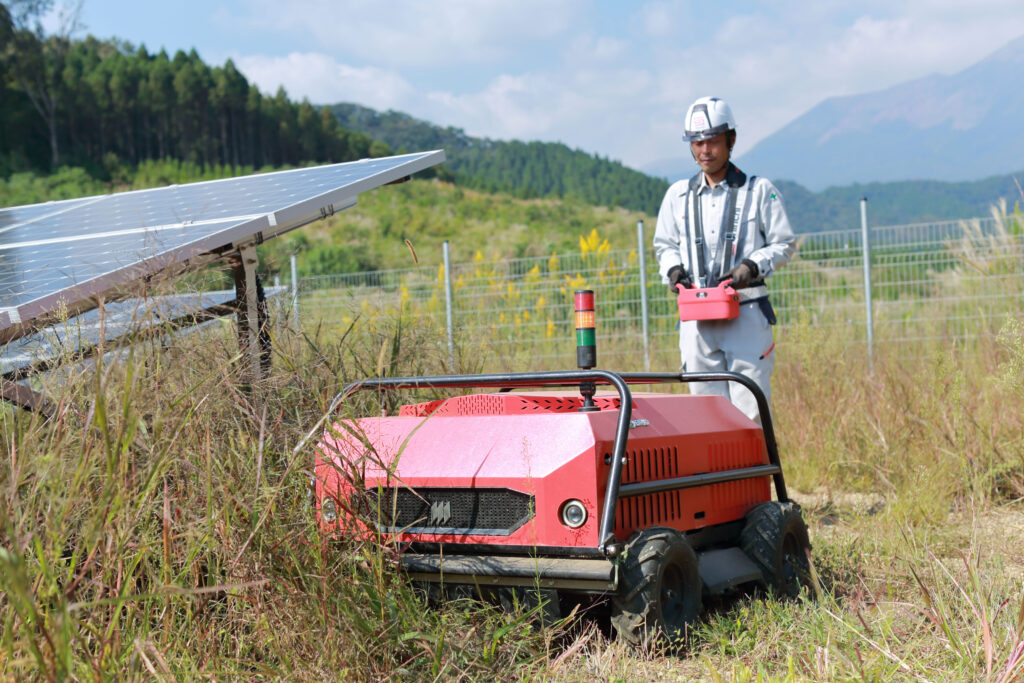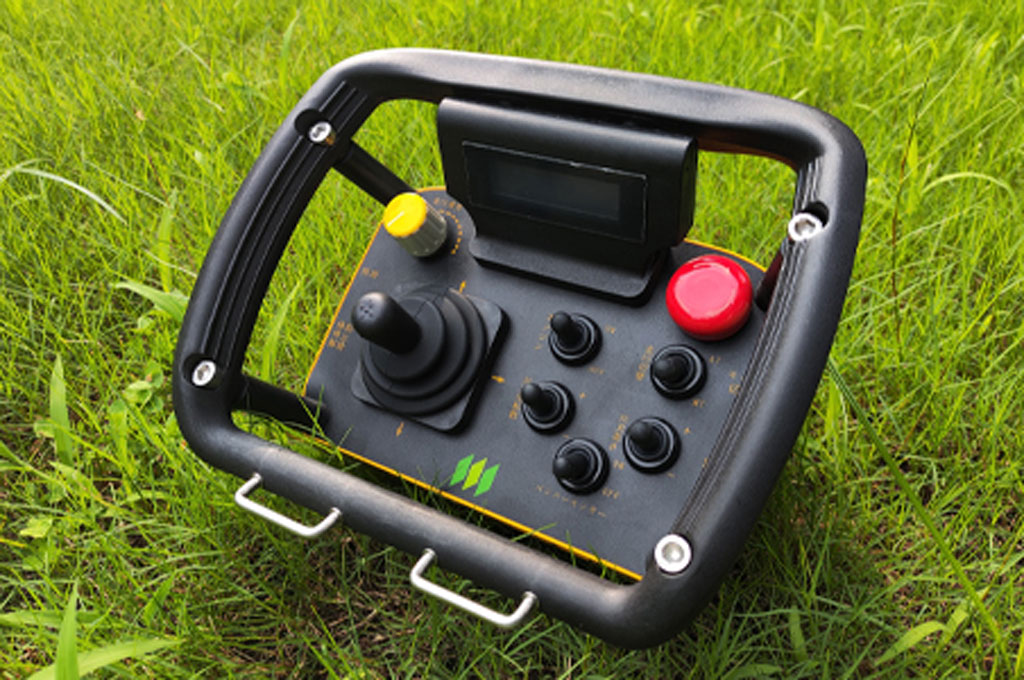Introduction
Levees and dams play a critical role in flood control, water management, and infrastructure safety. To remain structurally sound, these systems require regular vegetation management. Overgrown weeds, shrubs, and uncontrolled grass can weaken soil stability, block drainage, and even compromise long-term integrity. Yet, maintaining these slopes and embankments poses serious risks for workers. In recent years, remote controlled mowers have emerged as a safer, more efficient solution for levee and dam maintenance.

The Safety Challenges of Levee and Dam Maintenance
Vegetation control on levees and dams is far from simple. The terrain is often steep, uneven, and exposed to water, making manual mowing extremely hazardous. Workers face risks such as:
- Slips, trips, and falls on steep slopes.
- Machinery rollover when using ride-on mowers.
- Limited access to narrow or high-risk areas.
- Exposure to heat, insects, and unstable ground near water.
Traditional mowing equipment was never designed for such demanding environments, leaving infrastructure operators searching for safer alternatives.
Why Remote Controlled Mowers Are a Game-Changer
Remote controlled mowers address these challenges directly by combining robust engineering with advanced safety features:
- Reduce Risk to Workers: Operators can manage mowing from a safe distance, avoiding direct exposure to hazardous slopes and unstable terrain.
- Steep Slope Capability: Equipped with tracked undercarriages and powerful engines, these machines can operate reliably on inclines up to 45 degrees, making them ideal for levee maintenance.
- Precision and Efficiency: Smart navigation systems and wide cutting decks ensure maximum coverage while minimizing missed areas.
- Versatility Across Terrains: Whether it’s dense weeds, tall grass, or wet soil, a remote controlled slope mower delivers consistent performance in environments where traditional machines struggle, making it a reliable choice for levees, dams, and other steep embankments.
Applications in Levee and Dam Operations
The benefits of remote controlled mowing extend to several critical infrastructure applications:
- Levee Maintenance: Regular mowing prevents deep-rooted vegetation from undermining structural stability and improves visual inspections.
- Dam Safety Operations: Slope mowing reduces the risk of erosion, ensures drainage pathways remain clear, and enhances monitoring of dam embankments.
- Flood Prevention Projects: By keeping vegetation under control, these machines contribute to smoother water flow and faster emergency response times.
- Public Infrastructure Upkeep: Parks, reservoirs, and nearby green spaces also benefit from safer, quieter mowing operations.
Cost Efficiency and Operational Benefits
Beyond safety, remote controlled mowers deliver significant cost advantages:
| Factor | Traditional Mowing | Remote Controlled Mowing |
|---|---|---|
| Labor Requirements | Multiple workers needed on-site | Operated remotely by one worker |
| Risk of Accidents | High – rollover and fall hazards | Minimal – operator stays safe |
| Coverage on Slopes | Limited and uneven | Consistent on steep inclines |
| Maintenance Needs | Frequent servicing due to strain | Reduced wear with optimized load |
| Overall ROI | Moderate | High – safer and more efficient |
By reducing the need for large mowing crews and minimizing downtime from accidents, infrastructure managers achieve both safety improvements and long-term savings.
The Future of Remote Controlled Mowing in Infrastructure
As governments and municipalities increase investment in dam and levee safety, demand for innovative maintenance tools will continue to grow. Remote controlled mowers are positioned to become standard equipment in slope management thanks to their reliability, adaptability, and ability to meet strict safety requirements. Moreover, hybrid-powered and eco-friendly models are further aligning with sustainability goals while delivering operational efficiency.
Conclusion
Vegetation management is essential to the long-term safety of levees and dams, yet traditional methods expose workers to significant risks. Remote controlled mowers provide a safer, more reliable, and more cost-effective solution for slope mowing and infrastructure maintenance. By removing workers from hazardous areas while maintaining consistent performance on steep and uneven terrain, these machines not only protect human lives but also extend the lifespan of critical flood control systems.
For agencies and contractors responsible for levee maintenance and dam safety operations, remote controlled mowing is no longer a luxury—it is a necessity for modern infrastructure management.
FAQ: Remote Controlled Mowers for Levees and Dams
Q1: Can remote controlled mowers handle steep slopes on levees?
Yes. Most models are designed with tracks and low centers of gravity, allowing safe operation on inclines up to 45 degrees.
Q2: How do these mowers improve dam safety?
By controlling vegetation growth, they prevent root intrusion, reduce erosion risks, and improve inspection visibility.
Q3: Are remote controlled mowers cost-effective compared to traditional mowing?
Absolutely. A remote controlled mower reduces labor needs, lowers accident risks, and improves operational efficiency, leading to a higher ROI. For large-scale vegetation management, modern slope mowing equipment can further cut costs while ensuring safety on challenging terrains.
Q4: Can they operate in wet or muddy conditions near dams?
Yes. With rugged track systems, remote controlled mowers maintain stability and traction on soft or uneven ground.
Q5: Do remote controlled mowers require constant supervision?
Minimal. Operators maintain control from a safe distance and can adjust mowing paths without physical exposure to hazards.


